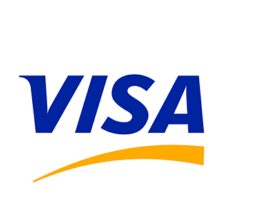Jumia (www.jumia.com) has said that its efforts are geared toward taking the company forward on its roadmap to profitability, as the management said it is planning to launch JumiaPay for off-platform payments.
Speaking at earnings call with analysts, Sacha Poignonnec, Co-Founder & Chief Executive Officer said: “as the leading e-commerce platform in Africa, we are at the heart of this transformation. We have the vision, platform and talent to benefit from this tremendous opportunity”.
Poignonnec said the company’s strategy remains centered on the same four key pillars; driving the growth of Jumia usage, developing our strategic priority in the fintech space with JumiaPay, dragging monetization and continuously improving cost efficiencies.
“All these are geared toward taking the Company forward on our roadmap to profitability”, he added.
Growing the Jumia marketplace means capturing an increased share of the consumer wallet and shifting a larger proportion of their spending online.
That’s exactly what we are aiming for through the drive of everyday product categories on Jumia”, Poignonnec.
Poignonnec said: “On growth, we’re making great progress on the usage and relevance of our platform, firmly positioning Jumia as the new digital destination of choice for everyday needs in Africa.
Gross Merchandise Value (GMV) increased by 39% year on year, and number of orders increased more than twice as fast by 95%. We reached 5.5 million annual active consumers, almost 2 million more than a year ago.
He added that Jumia is making great strides with JumiaPay, which is showing very strong growth momentum in both volume and transaction terms.
The JumiaPay on-platform total payment volume increased by 95% year-over-year, while the number of JumiaPay transactions accelerated by 262% over the same period.
“These are excellent results. We’re very pleased with the development and traction of JumiaPay”, he said.
The co-founder, CEO said in parallel with this growth momentum of the marketplace and JumiaPay, the management is able to effectively drive monetization of this usage and transactions.
Jumia’s gross profit increased by 45% as marketplace revenue grew by 52% year-over-year.
“We want the growth and development of JumiaPay to happen in a cost-effective manner. Our adjusted EBITDA loss as a percentage of GMV decreased this quarter by 153 points on a yearly basis and our operating loss as a percentage of GMV decreased by 62 basis points”, the CEO stated.
On quarterly performance, he said: “Marketplace growth means for us increasing adoption and usage of our platform, which is clearly reflected in the evolution of our topline growth drivers this quarter.
Jumia said it aspires to be the most relevant e-commerce platform for African consumers and sellers, to connect and transact.
According to the management, annual active consumers grew by 56%, which is the strongest growth level of the past five quarters.
Also, net quarterly consumer add reached 636,000 consumers this quarter, which is more than double the amount of net quarterly consumer adds over the same period last year and our orders grew even faster.
It would be interesting to know that the number of orders placed on Jumia this quarter increased by 95% versus the year-ago provisions.
“We’re very pleased with this momentum because it demonstrates that the continuous enhancements we are making to the marketplace are working”, the Co-founder/CEO said.
He spoke about the launch of Jumia Mall, which took place mid-September.
He said: “We’ve been serving brands for many years, of course, and they’ve been using Jumia to engage with users across Africa for some time.
“Now, with Jumia Mall, we have really enhanced the value proposition of our marketplace for both the brands and the consumers.
“We created a dedicated space within the Jumia platform for the brands to better engage and reach online users.
“The brands can now create a tailored online store with customized content, visual identity to tell the story of their brand with relevant content, words, images and videos”, Poignonnec said.
He said Brands also have multiple services available to them to build awareness and drive online sales performance, such as marketing and visibility packages, access to business intelligence and data analytics.
Poignonnec said: “we provide a seamless, effortless fulfillment experience for Jumia Mall brands to Jumia Express. We co-locate the relevant inventory of brands in our fulfillment centers, offering them an end-to-end fulfillment solution”.
The management said the Jumia Mall launched had a lot of traction with brands, and the traction has been broad based with momentum across major product categories. We have, on Jumia Mall, beauty and personal care brands like L’Oreal, Johnson & Johnson, Nivea etc.
The management said in less than two weeks after its launch, as of September 30th, Jumia Mall was home to 500 e-shops, representing about 50% of Forbes top 100 consumer brands and approximately 35,000 live product listings.
Poignonnec said, for us this is a great success and we really look forward to welcoming even more brands in the future. Jumia Mall is also great for the consumers.
He said Jumia also offer consumers the possibility for 15-day returns versus 7-day on the rest of the platform for most product categories. And they can also benefit from brand warranty on selected products.
Of course, Jumia Express allows faster bill returns, which consumers love as well. So, Jumia Mall is really one of the illustrations of our continuous efforts to drive consumer adoption and make Jumia an even more attractive destination for both the sellers and the consumers.
Jumia said it has indicated in the past that less than 1% of retail sales in Africa are happening online. This compares to 10% in the U.S., and more than 20% in China.
“So, growing the Jumia marketplace means capturing an increased share of the consumer wallet and shifting a larger proportion of their spending online. That’s exactly what we are aiming for through the drive of everyday product categories on Jumia”, Poignonnec added.
The management stated the desire to put Jumia at the heart of the consumption in Africa, catering to the everyday needs of our consumers.
The fastest growing category of what consumers are buying online by far is what we call digital services.
The Co-founder said these are essentially everyday services that we make available to consumers via our JumiaPay application: airtime top-ups, data plan recharge and utility bill payments.
Jumia Food grew by 83% in terms of items sold on a year-to-date basis.
Its report shows that annual active consumers have accelerated its uptrend this quarter to 56% yearly growth, which is the strongest growth level of the past five quarters.
JumiaPay is currently live in six of our countries of operations. It is designed very much like a PayPal account that can be linked by the consumer to many different payment methods.
JumiaPay is really core to our marketplace proposition because we want to ensure frictionless consumer experience at checkout. It is key for us because it drives operational efficiency and removes some of the complexities associated with cash-on-delivery.
As of September 30th, Jumia Lending is also available in six markets.
“Since we launched it in 2017, we facilitated the origination of almost EUR5 million worth of loans to more than 700 sellers in our platform. The average loan amount is about EUR3,000 and the average duration is five months”, the management said.
He said: “we are preparing the launch of JumiaPay for off-platform payment processing. As we are driving the penetration of JumiaPay within our on-platform, this paves the way for the future expansion off platform. We are building a strong user base.
“We are building the proof of concept, the case study of success that will serve to expand JumiaPay services off platform.
“Today, JumiaPay powers the Jumia market-based ecosystem; and tomorrow, it will render the same services to third-party merchants and those merchants can be either online merchants or offline merchants”, the management said.
The management stated that the investment it received from MasterCard earlier this year is a great validation of the payment solution it has built, but also a tremendous catalyst for server product development and innovation.
The company target for JumiaPay is powering e-commerce in Africa and building on-payments to offer a relevant suite of financial services to both the merchants and the consumers.
Speaking on the result, Antoine Maillet-Mezeray the Chief Financial Officer said in the third quarter of 2019, Jumia continued to see a reduction in the proportion of first-party business in our GMV on a yearly basis.
He said: “our marketplace revenue increased by 52%, while our gross profit margin expanded by 28 bps from 6.3% to 6.6% of GMV.
“We continue to drive monetization from diversified marketplace revenue streams. Commissions, which are charged to our sellers, grew by 27%. Fulfillment, which is delivery fees charged to consumers, grew by 82%.
Value-added services, which include services, provided to our sellers around logistics, packaging, content creation grew by 33% and marketing and advertising, which corresponds to the revenue generated from the sale of a broad range of ad solutions to sellers and advertisers, grew by 125%.
The sustained momentum in this revenue stream shows the appetite from both sellers and advertisers for a compelling offer of digital advertising that can reach a broad base of users while driving measurable performance.
While the first few years of Jumia, we were mostly a commission business from the monetization standpoint. This was the time of sellers who were new to our platform and e-commerce in general.
We then introduced value-added services and started monetizing them. And we are currently focused on marketing and advertising services.
Jumia Advertising is set up as an in-house advertising agency with dedicated marketing and advertising professionals.
The target clients for Jumia advertising are brand advertisers and sellers, advertising agencies, and other providers of relevant services and products through our ecosystem participants.
Why our active consumers increased by 56% and our orders accelerated by 95%, our Sales and Advertising expense increased by 6% and decreased as a percentage
Our Tech and G&A expense, excluding share-based compensation, increased by 38% on a yearly basis, mostly as a result of an increase in staff costs and professional fees.
Comparing the G&A costs, excluding share-based compensation from quarter to quarter this year, shows modest increases in the range of 45% quarter-on-quarter. We remain focused on driving further efficiencies in our G&A base and are constantly optimizing our operating structure.
As a result of increased usage, increased monetization and cost efficiency, we continue to make progress on our path to profitability. Our adjusted EBITDA loss as a percentage of GMV decreased by 163 bps from 18% in Q3 ’18 to 16.5% in Q3 ’19.
Over the same period, our operating loss as a percentage of GMV decreased by 62 basis points from 20.5% in Q3 ’18 to 19.8% in Q3 ’19.
The key levers to take our business to profitability remain the same; focus on the value and margin accretive growth, while continuously driving cost efficiencies.
The management said cost efficiencies remain optimizing variable cost per volume unit through scale and driving operating leverage on fixed cost as well as periodic cost rationalization measures.
Our path to profitability is further supported by our asset-light business model and favorable working capital dynamics.
Capital expenditure during the third quarter of 2019 was EUR1.5 million, which is less than 1% of GMV. Net change in working capital resulted in an inflow of EUR0.4 million this quarter.
As at September 30th 2019, we had EUR291 million of cash available, including EUR227 million of cash and cash equivalent and EUR64 million of term deposits, which are cash balances on the nine-month deposit basis.
Overall, Jumia said it is absolutely convinced that it has the right strategy to build a winning e-commerce platform in Africa and to take Jumia to profitability.
“Our long-term objective is to drive adoption, engagement and the usage of Jumia. This usage is ultimately what drives sustainable revenue and margins, as well as the engine for the adoption of JumiaPay.
“It’s very simple. The more people use Jumia, the more data we have, the more we can monetize and the more we are able to drive the adoption of JumiaPay.
“On the cash, we currently have roughly EUR300 million of cash and the cash at bank and short-term deposits. Our Q3 cash utilization was around EUR44 million, Poignonnec said.



